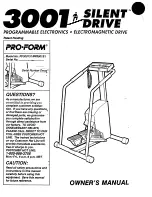
MY19 Millie – Millie 30 – Freddie
Installation Manual
Welcome to The APQS Family!
Thank you for selecting APQS as your longarm quilting company! As a family-owned company, we work
hard to make our “new” family members feel welcome, and we provide lifetime customer support.
We are honored to serve you.
This manual includes the necessary information to assemble your Millie or Freddie Quilting System.
If you are missing any parts or have received incorrect or damaged parts, please call our Customer
Service Team at 800-426-7233 so we can resolve the problem quickly for you. You can also reach us by
Even if you are not assembling the machine yourself, please read the assembly instructions and
familiarize yourself with their contents. You’ll learn the different part names and will better understand
your setup should you ever need to call us for service.
Every machine purchased directly from APQS includes a free, 6-hour beginner class. Visit our
to locate a beginner class near you, or contact your
on YouTube – you’ll find video tutorials on everything from
how to thread your machine to how to quilt feathers, along with helpful maintenance videos. Don’t
forget to “like” us on Facebook and follow the “
” Facebook page!
You’ll also find helpful tips on the APQS website at
. Visit the “Resources” and the
“Service and Support” tabs for more videos, our blog, and the answers to the most frequently asked
service questions.
If you have any questions, please contact us. We are here to help!
APQS
800-426-7233


































